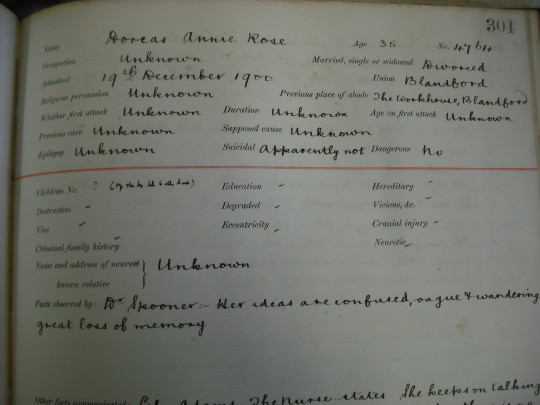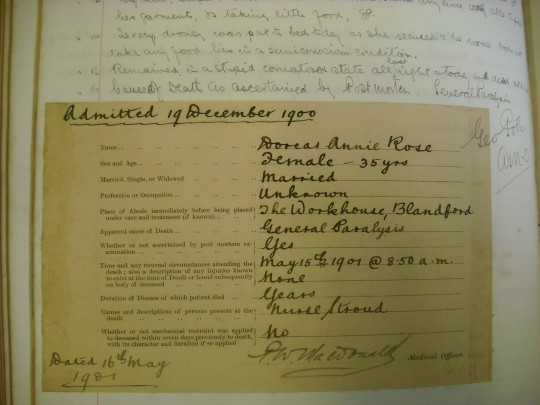Text

Prior to the construction of Day Cottage, a small cottage stood at the site, with the land owned by prominent landholder Jabez White. White leased 40 acres of his land to a relative, William Day (1835–1917), in 1858 and Day, his wife Susan (1836–1929), and their oldest two children, Sarah Ann and James, settled on their new property. The Day property was expanded with the construction of a stone shed, and the family did, too, with FIFTEEN children born to the Days between 1857 and 1882. The expanded family made the construction of a larger homestead necessary and Day Cottage was built between 1882 and 1885 by Day, his sons and a stonemason, close to the existing buildings. Day named the place Ellendale. For a short time, between 1895 and 1896, the cottage was converted into a hotel, the Rockingham Inn. In 1897, Day joined the Rockingham Roads Board, a forerunner of what is now the City of Rockingham. William and Susan Day left the property in 1901 to move to Fremantle, transferring it to their youngest three sons. Occupation of the property by the Days ceased in 1919 when it reverted to members of the White family, and ownership and occupation changed frequently until 1962. Day Cottage, however, remained unoccupied and has deteriorated over the years. credit: Wikipedia
#daycottage #historical #thediary #romance #timetravel
0 notes
Text

HEADSTONE READS: In Memory of Charles Albert Cowdery and Bessie his beloved wife. Both were lost at the wreck of the barque James Service off Fremantle July 23rd 1878. aged 33 and 28 respectively.
photgraph taken Mandurah Cemetary, Pinjarra road.
While exploring a little cemetery in the new town we now call home I came across this headstone and became fascinated by the events that led to this young couple being buried here.
In 1878, the James Service, a 455-ton iron barque built in Scotland in 1869, set sail from India to Melbourne. It carried a cargo of sack bags, castor oil, jute, and sundry items including crates of bowler hats.
On board was a crew of ten* and ten* passenger, the passengers a theatrical group from London, bound for Melbourne.
One of this group was well known actress Bessie (stage name Edwards) Cowdery 28 and her husband Charles Albert Cowdery, 33.
I have found in a search for Bessie Edwards as an actress two mentions in newspaper courtesy of Footlight Notes:
‘Mr. R. BLACKMORE has organised another company for a five months’ season in Calcutta, the artistes engaged comprising Messrs Crawford, Cowdery, [George] Titheradge, Bond, E. Sheppard, Owen, Beverley; and the Misses Alice Ingram, Bessie Edwards, Alma Sainton, A. Rose, Phœbe Don, G. Leigh, F. Seymour, and Tessy Hamerton. They sailed from Southampton on the 21st inst. in the ”Poonah.” The Corinthian Theatre will be the scene of their operations.’
(The Era, London, Sunday, 24 September 1876, p. 4c)
‘CALCUTTA.
‘My dear Tahite, – Miss [Rosa] Cooper‘s benefit came off a few days ago. She played Miami in ”Green Bushes,” and the house was wedged. I understand the low-comedy man of this theatre is engaged to Mr. Coppin. The artist and the manager are shortly going to China in a panorama (”The Prince in India”). The French opera has been a disheartening failure. I never saw anything so bad, even at a third-class concert in Melbourne. Miss Bessy Edwards is a pretty taking actress, and Miss Phœbe Don, if not a great actress, is so bewilderingly beautiful a woman, that young men – and for the matter of that old men – go distraught about her… .’
(The Australasian, Melbourne, Australia, Saturday, 28 April 1877, p. 19c)
On July the 22nd, 1878, residents south of Mandurah, Western Australia, claimed to have heard a signal gun of a ship in distress with another local claiming to have seen a large vessel minus its mizzen mast. This was the James Service. The next day a local stockman reported to the police that wreckage had washed up on the beach. From the tallest vantage point, a police officer could see the top mast of a vessel but as the sea was so rough, no boats could be launched to attempt a rescue. By late afternoon the mast could no longer be seen.
Over the next weeks, items that had once been on board the James Service washed ashore. Tins of castor oil, a long boat bearing the name James Service, items of clothing, boxes, trunks and luggage, some labelled as belonging to Bessie Edwards. Sadly, bodies also washed ashore. Some, like Bessie and her husband were buried in a small cemetery in Mandurah. Others were interred in the sand dunes on the beaches they washed up on, so badly decomposed they could not be transported to more suitable places. They in time, however, were moved to different cemeteries.
It is not certain what caused the James service to flounder and sink as no one survived to tell the tale.
The only clue comes from a passenger's diary that washed up on the beach. Dated 20th July, the writer stated that ‘the ship had encountered very boisterous weather for some time, and that on one occasion the wind had been so strong as to put her on her beam ends, the yards touching the water.’
It is assumed that the ship was damaged in this bad weather and attempted to reach Fremantle for urgent repairs sinking before reaching the safety of the port.
The James Service is virtually part of the reef now, encrusted with marine growth. Its anchor rests in the small Mandurah cemetery alongside some of the unfortunate passengers and crew.
There is an interesting newspaper report of the sinking courtesy of TROVE which can be found here.
https://trove.nla.gov.au/newspaper/article/5941437
Information used in this post is courtesy of the City of Mandurah, Museum of WA, and Footlight Notes websites.
*Some sites put crew at 11 and passengers at 7.
0 notes
Text


Although it’s the history of the area where I grew up that inspired my book The Diary, my love of genealogy also played a part. With family history records such a births, deaths and marriages being so readily available online, tracing ancestors has become a lot easier. Occasionally, however, a record of a different sort can give a remarkable glimpse into the lives of those that came before us, albeit in this case, a sad one.
Dorcas Annie Rideout was my great-great grandmother on my mother’s side and was born in the village of Chettle in Dorset in 1865.
She was born to Anthony Rideout and Eliza Lane and married John Rose or Roles in 1882 in Christchurch Dorset. (I had the lovely experience of visiting Chettle and was given the key to open the little church where Dorcas was baptised. The original font is still there).
Dorcas and John went on to have one child, Eliza Mabel May. This was unusual for the time to have only one child and usually meant that other pregnancies failed, or infants were stillborn. A chance discovery of a record on the National Archive website pointed to why this may have been the case for Dorcas.*
In December of 1900, Dorcas was admitted to the Herrison Hospital in Dorset. Herrison Hospital at time was a lunatic asylum. From viewing her admittance records, known as the Pauper Lunatic Reception Records, two small readable entries amongst the indecipherable physician’s script were enough to tell the sad story of Dorcas’s last years.
The admittance record has Dorcas listed as divorced. Further research shows that she was divorced in 1897, the petition brought against her by her husband. The co- respondent was named as Henry Francis who was a Hansom Cab company owner. On the 1891 census record, John Rose’s occupation is listed as cab driver. Make of that what you will.
The admittance records also show that Dorcas’ last address before being admitted to Herrison Hospital was Blandford Workhouse. This means that having no one to support her after he divorce and no means to support herself, Dorcas, and presumably her child Eliza, my great grandmother, had no choice other than the enter the workhouse. As no records exist for the Blandford workhouse, it is not known when she was first admitted but it is likely it was around the time of her divorce.
She was admitted to the asylum after she was found ‘wandering.’ The nurse’s notes in the photograph give a graphic description of the state she was in.
Dorcas was only in the asylum for 5 months before she died, her cause of death listed as General Paralysis, which in other words means Dorcas died of syphilis that she had contracted at some point in her short life. Not uncommon, syphilis was also the probable reason she only had one living child and would lead to thinking that she contracted it around the time of her daughter’s birth in 1883. Untreatable in the 1880’s, Dorcas would have lived with the disease for years until the bacteria eventually infected her brain, resulting in psychosis and ultimately her death.
Her child Eliza, 18 years old when her mother died, went on the marry a Mr Thomas Gritt, and had three children by him. But none of those were my grandmother. The father of my grandmother was another man who appeared to have lived two separate lives, but that’s another story.
*There is a something written next to the entry marked ‘children’ on Dorcas’s admittance records that is hard to make out. Possibly says ‘she says she has 6 other children dead’.
0 notes
Text

On a dirt track that edges a train marshalling yard are the remains of a cottage.
Watched over by two towering Norfolk pines, the building, nothing but rubble now, was once the home to the Thorpe family, John and Mary, and their ten children.
The cottage, a tiny two roomed earth floor home built in 1858, was made from local limestone and sheoak. Other materials, such as nails were possibly salvaged from sailing ships, as was the five-foot high doorways used in the small cottage.
The Thorpes were one of a handful of families that built homes and lived in an area that couldn’t have been more different to what they had left behind in England. Small villages, close communities and lush green landscapes were replaced by endless bushland, flies, heat, and venomous creatures. Neighbours could be kilometres away and the closest doctor, a half days ride to the town of Fremantle.
It was not unusual for diets to consist of wild duck, possum, kangaroo and fish, a cookbook of the time having a recipe for roast wombat and emu. However, although the menu might seem odd, it was, in a lot of cases, far better than the food that may have been available to some back in England.
This was hard living for those that chose to sail halfway around the world in search of a better life and it’s the early settlers of the area I live in that was the inspiration for my book The Diary.
0 notes
Text

This year we downsized to a smaller home for two now that the kids have all moved to their places, and after completing all the boring renovations it is time to turn this small bedroom into a writing room!
I was positive what colour I wanted to paint the walls, or at least a feature wall and that was a soft sage green. A soothing, cool, earthy colour. Yes, that what exactly the colour I wanted. So, eventually after studying the mind-boggling array of greens available at the hardware store, from shady gum to misty moor, mermaid splash to, yes, sage green, I picked the shade I wanted. It was mixed, paid for, and taken home, the whole process taking about two hours.
And now, as you can see, the room is pink.
This isn’t because of some terrible paint mixing error, or that I don’t know my greens from my pinks, (although my husband tells me that I don’t know my blues from my purples but of course he is wrong). It’s simply that I spotted a roll of beautiful pink wallpaper on my way out of the store with my green paint and decided, yes that was exactly the colour I wanted.
So, with walls painted pink, grey carpet laid, a rocking chair, (a birthday gift from my husband and to be used purely for working purposes such as thinking and reading and never for a quick nap), I have the basics for my room.
A lovely little desk I bought second-hand is being refurbished and that will sit alongside the window which looks out into a courtyard dominated by a very large frangipani and bird of paradise plant. They both need a prune, but a competent gardener I am not so I will defer to someone who knows a pruner from shears if there is such a difference.
As for the style of the room, I am thinking French provincial, but then think shabby chic, then boho (not really knowing what that is) and then wonder is there a shabby boho French style?

1 note
·
View note
Text
Exploring History
Please come back soon to explore history with me.

Photo by Joanna Kosinska.
1 note
·
View note
Text
Sarah's World
Please come back soon to see what I have been up to.

Photo by Sigmund.
1 note
·
View note
Text
Work In Progress
Please come back soon to see what I am working on.

Photo by Kyle Glenn.
0 notes